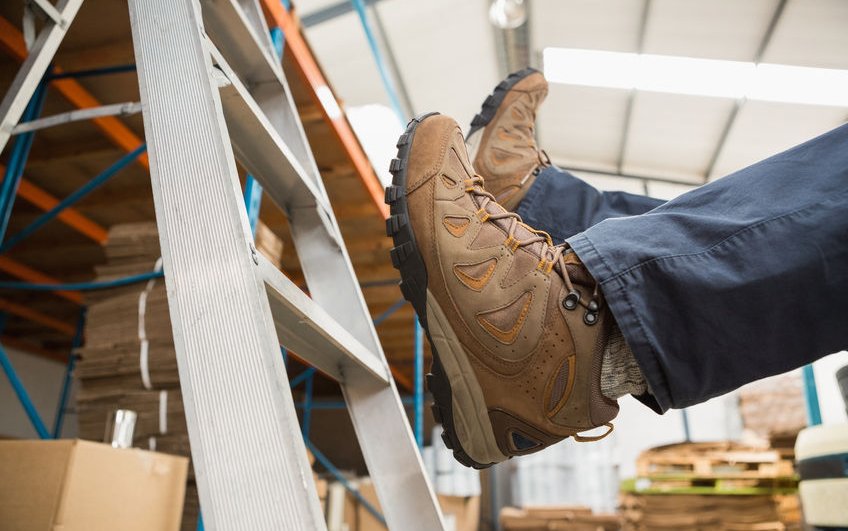An All-Party Parliamentary Group (APPG) has published an inquiry report calling for a review by government and industry of the risks associated with working at height.
The report “Staying Alive: Preventing Serious Injury and Fatalities while Working at Height” shows more needs to be done to create a safer environment.

In the period between 2013 to 2018, falling from height was the number one cause of workplace fatality – averaging 37 deaths every year. Many incidents are entirely preventable and result from poor working at height practices – whether lack of planning or equipment, or cultural complacency. In a 12-month inquiry, the APPG explored why the 18% of people who die at work do so as a result of a fall from height.
The APPG report describes how improving communication around existing regulation, advice and best practices could help mitigate poor practices.
Although we fare better than other European countries, the APPG stress that there were still 35 fatalities in the UK from falls from height in 2017/18, and 186 in the last five years.
Improved Reporting
Industry responses to the inquiry made it clear that a system of improved reporting through RIDDOR is required.
The inquiry found effective reporting systems are vital in determining why workplace injuries occur and how to prevent future incidents. The APPG believe the role of digital technology and effective reporting systems in improving the planning of work and reporting of incidents is still to be fully exploited – the APPG say “lack of planning during all stages of a project is a significant cause of falls from height”.
Most responses supported the principle that the Work at Height Regulations 2005 are broadly fit for purpose. However, crucially, the interpretation and application of the legislation varied.
Recommendations
The APPG report makes four key recommendations to reduce fall numbers:
- The introduction of an enhanced reporting system through RIDDOR, which, at a minimum, records the scale of a fall, the method used and circumstances surrounding it.
- Appointing an independent body to allow confidential, enhanced and digital reporting of all near misses and accidents that do not qualify for RIDDOR reporting to be shared with government and industry, and inform Health & Safety Policy.
- Extending the Working Well Together: Working Well at Height safety campaigns to industry outside of the construction sector.
- Adopting an equivalent system to Scotland’s Fatal Accident Inquiry process across the UK.
Free Download: Definitive Guide to General Risk Assessments
Identify risks and keep your business compliant with this free guide
The APPG stress the importance of recording near misses and minor incidents that do not result in more serious injuries. This is because a greater understanding of why incidents happen helps to change behaviour and prevent more serious falls. However, the APPG say systems alone will not prevent incidents and that cultural change is needed to make sure workers feel able to confidentially disclose information.

Alison Thewliss, Chair of the APPG on Working at Height
The APPG feel a major review of the culture surrounding work at height is needed by government and industry. This should include an investigation into the suitability of legally-binding financial penalties in health and safety – funds that could be used to raise awareness and training, particularly in hard-to-reach sectors.
In Scotland, a Fatal Accident Inquiry (FAI) is carried out when death results from a work incident. FAI establishes the facts surrounding a death but does not apportion blame through criminal proceedings. The APPG believe an equivalent system should be extended to the rest of the UK.
Culture Change
The APPG say their report is the first step in a wider process of systematic and cultural change and that, having made recommendations, it is now time for policy makers to act. Alison Thewliss, Chair of the APPG on Working at Height, said “Every fall from height can have life-altering consequences for workers and their families. There is an urgent need to improve work at height culture, yet this issue is sadly not at the top of decision-makers’ agenda”.
The Work at Height Regulations 2005 apply to all work where there is a risk of a fall likely to cause personal injury. Since their introduction, the UK has consistently had some of the lowest workplace fatality and serious injury rates. Since 2014, the UK has had on average 0.45 fatalities per 100,000 employees – this compares favourably to similar industrial countries such as France (3.14) and Germany (0.81).
However, the APPG stress there were still 35 fatalities in the UK from falls from height in 2017/18, and 186 in the last five years. The APPG conclude that much more must be done by policymakers, regulators and industry leaders to reduce falls from height.





